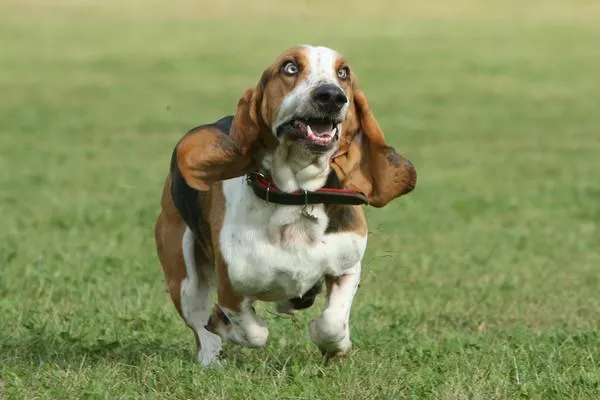Owning a beloved Basset Hound comes with a range of responsibilities, and one crucial aspect of their care is keeping their nails well-trimmed. Overgrown nails can lead to discomfort and potential health issues for your furry friend. In this comprehensive guide, we’ll walk you through the steps to confidently and safely clip your Basset Hound’s nails, ensuring their comfort and well-being.
1.The Importance of Nail Care for Basset Hounds
Comfort and Mobility: Basset Hounds, known for their low stature and droopy ears, can face discomfort if their nails are too long. Proper nail care enhances their mobility, preventing joint strain.
Health Implications: Long nails can lead to injuries, such as nail cracks or splits. This may even result in infections. Regular nail trimming helps prevent such problems.
Preventing Damage: Overgrown nails can cause damage to furniture and flooring, making nail maintenance essential for a harmonious home environment.
2.Essential Tools for Nail Clipping
Quality Clippers: Invest in high-quality dog nail clippers that are designed for the size and thickness of a Basset Hound’s nails. Scissor-type or guillotine-style clippers work well.
Styptic Powder: Have styptic powder on hand to quickly stop bleeding in case you accidentally cut the quick (the blood vessel inside the nail).
Treats and Positive Reinforcement: Prepare some tasty treats to reward your Basset Hound for their cooperation during the nail-clipping process. Positive reinforcement makes the experience more pleasant.
3.Step-by-Step Guide to Nail Clipping
Getting Familiar: Gently touch and handle your Basset Hound’s paws regularly to get them accustomed to the sensation before starting the actual clipping.
Examining the Nails: Look for the quick – the pink area that contains blood vessels and nerves. Avoid cutting into this area to prevent bleeding and pain.
Gradual Trimming: Trim a small portion of the nail at a time, starting from the tip. This prevents cutting the quick and allows you to stop if your dog becomes uncomfortable.
The Right Angle: Hold your dog’s paw firmly and ensure the clippers are angled perpendicular to the nail. This prevents splintering and uneven cuts.
Using Treats: Reward your Basset Hound with treats and praise after each successful trim. This reinforces positive behavior and makes future nail clippings easier.
4. Nail Clipping Frequency
Varied Growth Rates: Basset Hounds’ nails grow at different rates. Some may require more frequent trimming, while others can go longer between sessions.
Regular Inspections: Check your dog’s nails every few weeks. If you hear clicking on hard surfaces, it’s time for a trim.
5.Seeking Professional Help
Nail Trimming Services: If you’re uncomfortable or your Basset Hound resists nail clipping, consider seeking the help of a professional groomer or veterinarian.
Consulting the Vet: If you’re unsure about nail care or encounter bleeding during trimming, consult your vet for guidance and support.
Conclusion:
Mastering the art of nail clipping for your Basset Hound is a valuable skill that contributes to their overall well-being. By following these step-by-step instructions and understanding the significance of regular nail care, you’ll ensure that your furry companion enjoys a comfortable and healthy life, one step at a time.
FAQs About Clipping a Basset Hound’s Nails
Q1: How often should I trim my Basset Hound’s nails?
A1: The frequency of nail trimming can vary based on your Basset Hound’s activity level and how fast their nails grow. Generally, aim for trimming every 2 to 4 weeks. Regular inspections will help you determine when it’s time for a trim.
Q2: What if I accidentally cut the quick?
A2: Accidentally cutting the quick can be painful for your Basset Hound and may result in bleeding. If this happens, don’t panic. Apply styptic powder to stop the bleeding. Make sure to provide treats and comfort to ease any stress and reinforce positive associations with nail trimming.
Q3: Can I use human nail clippers for my Basset Hound?
A3: It’s best to use nail clippers designed specifically for dogs. Human nail clippers might not be sturdy enough to handle the thickness of a dog’s nails, potentially causing splintering or uneven cuts.
Q4: My Basset Hound dislikes nail trimming. What should I do?
A4: Some dogs are apprehensive about nail trimming. Start by introducing them to the process gradually. Use treats, praise, and a calm demeanor to create a positive atmosphere. If your Basset Hound remains resistant, consider seeking professional help or consulting your veterinarian.
Q5: Should I be concerned about over-cutting my dog’s nails?
A5: It’s natural to be cautious about over-cutting. Trim a small portion at a time, focusing on the tip of the nail. This reduces the risk of cutting the quick. Remember, practice makes perfect, and you’ll become more confident over time.
Q6: Can I file my Basset Hound’s nails instead of clipping them?
A6: While filing is an option, it’s often more time-consuming than clipping. Additionally, some dogs are sensitive to the noise and sensation of filing. If you choose to file, ensure you’re using a dog-friendly nail file and that your Basset Hound is comfortable with the process.
Q7: What if my Basset Hound’s nails are black, making it hard to see the quick?
A7: If your Basset Hound has dark nails, it can be challenging to identify the quick. Trim a little at a time and look for a small, greyish-pink circle in the center of the nail. If in doubt, consult your vet or a professional groomer for guidance.
Q8: Are there any alternatives to clipping for maintaining nail length?
A8: Regular walks on rough surfaces can help naturally wear down your Basset Hound’s nails. However, this might not be sufficient for all dogs, and occasional nail trimming will likely still be necessary.
Q9: Should I clip all nails in one sitting or do them gradually?
A9: Gradual is often better, especially if your Basset Hound is new to nail trimming. Start by trimming one or two nails, rewarding your dog, and stopping for the day. This approach helps prevent stress and makes the experience more positive.


